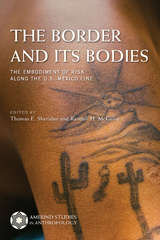Labor Market Issues along the U.S.-Mexico Border
Edited by Marie T. Mora and Alberto Dávila
The University of Arizona Press
Five million workers are employed in a variety of settings along the U.S.–Mexico border, yet labor market outcomes on each side often differ. U.S. workers tend to have low earnings and high unemployment compared with the rest of the country, while workers on the Mexican side of the border are often more prosperous than those in the interior. This book sheds new light on these socioeconomic differentials, along with other labor market issues affecting both sides of the border.
The contributors take up issues that dominate the current discourse— migration, trade, gender, education, earnings, and employment. They analyze labor conditions and their relationship to immigration, and also provide insight into income levels and population concentrations, the relative prosperity of Mexico’s border region, and NAFTA’s impact on trade and living conditions.
Drawing on demographic, economic, and labor data, the chapters treat topics ranging from historical context to directions for future research. They cover the importance of trade to both the United States and Mexico, salary differentials, the determinants of wages among Mexican immigrant women on the U.S. side, and the net effect of Mexican migration on the public coffers in U.S. border states. The book’s concluding policy prescriptions are geared toward improving conditions on the U.S. side without dampening the success of workers in Mexico.
Written to be equally accessible to social scientists, policy makers, and concerned citizens, this book deals with issues often overlooked in national policy discussions and can help readers better understand real-life conditions along the border. It dispels misconceptions regarding labor interdependence between the two countries while offering policy recommendations useful for improving the economic and social well-being of border residents.
The contributors take up issues that dominate the current discourse— migration, trade, gender, education, earnings, and employment. They analyze labor conditions and their relationship to immigration, and also provide insight into income levels and population concentrations, the relative prosperity of Mexico’s border region, and NAFTA’s impact on trade and living conditions.
Drawing on demographic, economic, and labor data, the chapters treat topics ranging from historical context to directions for future research. They cover the importance of trade to both the United States and Mexico, salary differentials, the determinants of wages among Mexican immigrant women on the U.S. side, and the net effect of Mexican migration on the public coffers in U.S. border states. The book’s concluding policy prescriptions are geared toward improving conditions on the U.S. side without dampening the success of workers in Mexico.
Written to be equally accessible to social scientists, policy makers, and concerned citizens, this book deals with issues often overlooked in national policy discussions and can help readers better understand real-life conditions along the border. It dispels misconceptions regarding labor interdependence between the two countries while offering policy recommendations useful for improving the economic and social well-being of border residents.
Marie T. Mora and Alberto Dávila
1 A Fixed Border’s Shifting Meanings: The United States and Mexico, 1821 to 2007
Anthony P. Mora
2 Labor Market Evolution
Thomas M. Fullerton Jr., James H. Holcomb, and Angel L. Molina Jr.
3 NAFTA and Economic Activity along the U.S.-Mexico Border
James T. Peach and Richard V. Adkisson
4 Labor Market Dynamics and a Look Inside Border Maquiladoras
John Sargent, Melissa Najera, and Linda Matthews
5 Evolution of Average Returns to Education in the Mexican Northern Border States
Hector J. Villarreal
6 Earned Income along the U.S.-Mexico Border
Alberto Dávila, Marie T. Mora, and Alma D. Hales
7 Wage Determinants of Mexican Immigrant Women along the U.S.-Mexico Border
Rogelio Sáenz, Lorena Murga, and Maria Cristina Morales
8 Differences between Mexican Migration to the U.S. Border and the Interior: Evidence from Mexican Survey Data
Pia M. Orrenius, Madeline Zavodny, and Leslie Lukens
9 How Do Mexican Migrants Affect Public Coffers? Changes in the Utilization of and Contribution to Public Benefits in U.S. Border States
Catalina Amuedo-Dorantes and Cynthia Bansak
10 The Earnings of U.S.-Resident Cross-Border Workers in 2000 and 2005
Marie T. Mora and Alberto Dávila
11 Comparing U.S.-Mexican Border Unemployment Rates to Non-Border Large MSAs
André Varella Mollick
12 Some Policy Implications for the U.S.-Mexico Border Region
Alberto Dávila and Marie T. Mora
Appendix: Defining the Border and Data Appendix
Notes
Bibliography
About the Editors
About the Contributors
Index








